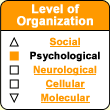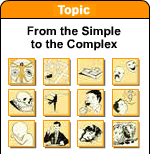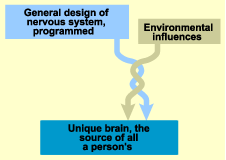|
|
| Funding for this site is provided by readers like you. | |
|
|
|
|
|||||
|
|
|||||||
|
|
|
|
|
|
|
|
Eating, sleeping, talking, laughing, fighting, being afraid, being with friends and family, having sex behaviours like these are the very substance of our daily lives and feel so natural to us, but just what are they, exactly? First of all, a behaviour is a set of movements produced by the muscles. These muscles are under the control of our nervous system, which is the product of evolution. Our evolutionary inheritance thus gives us certain predispositions that orient our behaviours. These universal predispositions also contribute to the way we organize our social relationships. But our brain is also greatly influenced by the environment in which it develops through its ability to learn. Our behaviours are thus the product of these two influences: the way that evolution has structured our brains, and the way that our environment individualizes this structure over the course of our lifetimes. The following diagram show how our behaviours depend on these two sets of influences, which are unique for each of us.
From a subjective standpoint, our
behaviours are motivated by a variety of needs. |
|
||||||||||||||||||||||||||
| |
|
|
|
|
|
|
|
|





